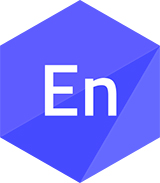Utveckling, verifiering och validering av grafenmatris för solenergi- och värmedriven värmepump
Syfte och mål
I detta projekt skulle SaltX Technology (ClimateWell) i samarbete med Chalmers Industriteknik (CIT) exploatera grafens termiska egenskaper och kemiska stabilitet. En ny matris skulle utvecklas för den termokemiska värmepumpsteknologin, patentskyddad av SaltX Technology.
Delmål, utveckling av:
- Chalmers Industriteknik: Kostnadseffektiv tillverkning av en grafensuspension.
- SaltX Technology: Teknik för tillverkning av sammanhängande grafenflak. Integrering av salt i grafenmatris. Ökad effekttäthet med grafenmatris för demonstratorer.
- SaltX Technology och Chalmers Industriteknik: Efterbehandling för ökad värmeledningsförmågan mellan grafenflaken.
Förväntade effekter och resultat
SaltX Technology har utvecklat en termisk solfångare som kan minska energiförbrukningen med 90 %, samt en komponent integrerad i gasdrivna varmvattenberedare som kan uppnå en energireduktion på 50 %. Ett lyckat resultat ger förbättrad konkurrenskraft i dessa applikationer. Grafensuspension kombinerat med beläggningsmetod kan vara till stor nytta för många andra industrier. Den strategiska betydelsen för Sverige är att SaltX Technology kan tillhandahålla en världsunik absorptionsprocess och snabbt leverera ut industriellt tillgänglig teknik till marknaden tack vare redan pågående kundprojekt med stora OEMs.
Planerat upplägg och genomförande
Projektet kommer att genomföras uppdelat i 5 arbetspaket:
1 – Optimering och utvärdering av grafensuspension
2 – Utveckling och utvärdering av tryckteknik av grafensuspension på cellulosafibersubstrat
3 – Utveckling av härdningsmetod av belagd grafen
4 – Saltintegrering i framtagen grafenmatris samt post-integreringsinspektion
5 – Verifiering och validering av grafenmatris i valda demonstratorer
Kunskapsöverföring kommer att ske genom att projektgruppen aktivt nätverkar och deltar i de workshops som SIO Grafen arrangerar.
Resultat
Nya och viktiga partners har kopplats in för att utveckla grafenteknologin hos SaltX Technology. Detta har möjliggjort att betydligt större steg mot storskaliga processer har tagits i de tidiga arbetspaketen, än vad som kunde förutses före projektstarten. Därför kunde delresultaten i arbetspaket 1-3 infrias. Projektet har tillverkat en grafensuspension med en högre koncentration och i större volymer, och har utvecklat en appliceringsteknik av grafenflagor och efterbehandling med värme och tryck. Detta har lett till avsevärda förbättringar av värmeledningsförmågan. Däremot krävs det mer arbete kring hur saltet kan integreras med grafenet (arbetspaket 4).
Projektet har avsevärt ökat kunskapen kring grafen och lagt en väldigt bra grund inför en framtida industriell tillverkning. En demonstrator har byggts inom projektet, vilken har visat att vi är på rätt väg.
De viktigaste insikterna är att grafenmaterialet i matrisen både kan fungera som god värmeledare i planet, samt att när grafenmaterialet är sammanfogat med SaltX Technologys salt, kan ledningsförmågan inom salt-massan förbättras. Dessa två fördelar innebär att vi kan ta bort dyra och korroderande metalldelar i matrisen. Ytterligare en insikt är att grafenet går att producera och applicera i stor skala.
En klar förbättringspotential kunde observeras tack vare integrering av grafen, men grafen-matrisen behöver alltså vidareutvecklas innan nya produkter kan tas fram. Den grafen-baserade matrisen beräknas vara produktifierad för försäljning under början av 2020.

